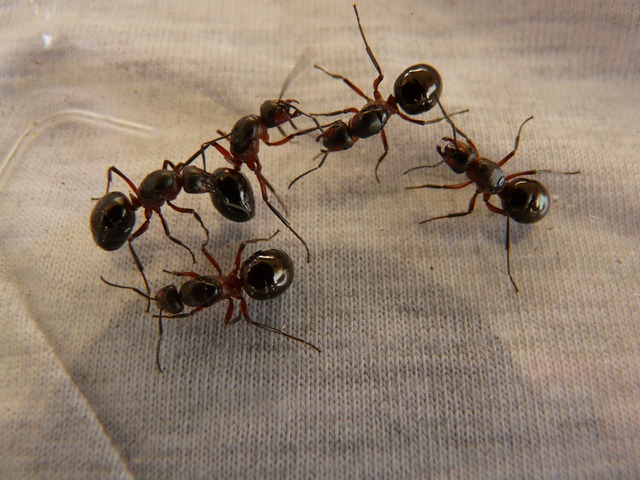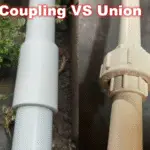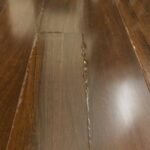Have you ever found yourself puzzled by the sight of ants marching across your kitchen counter in the dead of winter? You’re not alone.
While ants are typically associated with the warm months, they can still invade your home when temperatures drop. This unexpected intrusion can leave you wondering how these tiny invaders made their way inside and, more importantly, how you can send them packing.
Imagine feeling confident in your home, free from the unsettling presence of ants. Picture a clean, comfortable space where you don’t have to worry about pesky insects disrupting your peace. This article is here to help you understand why ants are making an appearance during winter and, crucially, how to effectively get rid of them. Discover the simple steps you can take to reclaim your space and protect your home from future infestations. Keep reading to turn your winter ant woes into a thing of the past.
:max_bytes(150000):strip_icc()/how-to-get-rid-of-sugar-ants-5324340-V1-f0615bd3cf224e07be760731154c21f0.jpg)
Credit: www.thespruce.com
Ant Behavior In Cold Months
Ants are fascinating creatures with unique behaviors. Even in winter, they remain active. Cold months don’t mean ants disappear. Instead, they adapt to survive. Understanding their behavior helps in managing them.
Survival Instincts
Ants have incredible survival instincts. They stock food before winter arrives. This ensures they have enough to last through the cold. Ants can slow their metabolism. This helps them conserve energy. These instincts are vital for their survival.
Indoor Nesting
Ants seek warmth during winter. Your home provides a perfect environment. They create nests in walls and floors. Indoor spaces offer shelter and food. This is why ants enter homes during cold months. Finding nests can be challenging. Inspect areas like kitchens and basements. Look for trails and ant activity. This helps in locating nests.
Common Entry Points
Ants in the winter can feel like an unexpected guest at a party you didn’t invite. You might wonder how these tiny creatures find their way into your warm, cozy home when it’s freezing outside. Understanding their common entry points can help you reclaim your space. Let’s explore the usual suspects where ants make their grand entrance.
Cracks And Crevices
Ants are experts at finding the smallest cracks and crevices to slip through. They don’t need much space, just a tiny opening in your walls, floors, or foundation. Consider inspecting these areas with a flashlight. You might be surprised at how many gaps you find.
Sealing these cracks can be your first line of defense. Use caulk or weather-stripping to close off these entry points. It’s a simple and effective way to keep ants out. Have you checked your basement recently? It could be the hidden source of your ant problem.
Utility Lines
Utility lines are like highways for ants. They use electrical wires, plumbing pipes, and cable lines to navigate into your home. These lines often have small gaps where they enter your house. These gaps are easy for ants to exploit.
Inspect these areas and seal any openings you find. Foam sealant can be particularly useful for larger gaps. Remember to check behind major appliances; they often hide potential entry points.
Doors And Windows
Doors and windows are another favorite entry point for ants. Even if you think they’re sealed tight, ants can sneak through gaps you might not notice. Weather changes can widen these gaps, inviting ants inside.
Install weather stripping to create a barrier against these pesky intruders. Regularly check the seals around your doors and windows. Have you noticed ants around your sliding doors? It might be time for a closer look.
With these insights, you can tackle your ant problem head-on. The next time you see ants marching across your floor, consider where they might be coming from. Could you have missed a crack or gap in your defense? Being proactive can save you the hassle of dealing with ants all winter long. What steps will you take to secure your home?
Attractants In The Home
Ants often enter homes in winter seeking warmth and food. They are attracted to crumbs, spills, and open containers. Clean regularly, seal food, and use natural repellents to keep them at bay.
Finding ants marching through your home in winter can be surprising. After all, these tiny intruders are usually associated with warm weather. Understanding what attracts them indoors during colder months is key to keeping them at bay. Your home might be more appealing to ants than you think, and it often boils down to three main attractants: food sources, moisture areas, and warmth and shelter.Food Sources
Ants are always on the hunt for food, even in winter. Your kitchen might be an irresistible buffet for them. Crumbs on the floor, open sugar jars, or unsealed snacks can lure them in. Have you ever found ants swarming a forgotten juice spill? Such incidents highlight the importance of keeping food sealed and cleaning up promptly. Keeping your countertops and floors clean can deter these persistent foragers.Moisture Areas
Ants need water to survive, and moisture-rich areas in your home can provide just that. Leaky pipes, damp bathrooms, or kitchen sinks can become hotspots for ants. Consider the last time you noticed a line of ants in your bathroom. They’re likely drawn by a hidden water source. Fixing leaks and using dehumidifiers can help eliminate these moisture attractions.Warmth And Shelter
Your warm home is a perfect refuge for ants during cold months. They seek shelter in places like walls, under floors, and inside cabinets. Remember the last time you saw ants near the fireplace or heating vents? They were likely drawn by the warmth. Sealing entry points and keeping your home’s temperature consistent can discourage ants from setting up camp. Are you unintentionally inviting ants in with open arms? By addressing these attractants, you can reclaim your space from these pesky visitors. Keep your home clean, dry, and well-sealed to prevent ants from crashing your winter retreat.:max_bytes(150000):strip_icc()/SPR-indoor-flying-ants-not-good-sign-2656361-1688514da4784719a394e4de90dffb57.png)
Credit: www.thespruce.com
Diy Ant Prevention
Ants invade homes during winter seeking warmth and food. Seal entry points and eliminate food sources. Use natural repellents like vinegar and essential oils to deter them. Regularly clean areas where ants are spotted to prevent infestations.
Finding ants in your home during the winter can be surprising. You might think these tiny invaders should be hibernating, but ants are resourceful. Cold weather drives them indoors, seeking warmth and food. The good news? You can tackle this issue head-on with some DIY ant prevention techniques. Let’s explore how to keep those pesky critters at bay.Sealing Entry Points
Ants can sneak through even the tiniest cracks. Inspect your home’s exterior for potential entryways. Use caulk to seal gaps around windows and doors. Check for tiny holes in walls or floors where ants could enter. Even a small opening can be an invitation for these uninvited guests. Your effort in sealing entry points can make a significant difference. One winter, I noticed a trail of ants coming through a gap in my window frame. A quick trip to the hardware store and a tube of caulk later, the problem was solved. Have you inspected your home for these sneaky entry points yet?Removing Food Sources
Ants are relentless when it comes to food. They can find the smallest crumb and turn it into a feast. Keep your kitchen counters clean and free of food debris. Store food in airtight containers to prevent ants from detecting it. Take out the trash regularly and make sure the bin is sealed tight. Once, I left a bag of sugar open on the counter, thinking it was safe. The next morning, I found a line of ants enjoying their sugary treat. Lesson learned: store everything securely. Have you checked your food storage habits recently?Managing Moisture
Ants are attracted to moisture, especially during dry winter months. Check for leaks under sinks and around appliances. Repair any dripping faucets or pipes promptly. Ensure your home is well-ventilated to prevent dampness from accumulating. I discovered a small leak under my bathroom sink, which I promptly fixed. The ants soon disappeared. Addressing moisture issues not only deters ants but also maintains your home’s health. Is there a hidden moisture problem in your home attracting ants? By focusing on these DIY ant prevention strategies, you can keep your home ant-free this winter. Each small step contributes to a more secure and comfortable living space. What changes will you make today to ensure those ants stay outside where they belong?Natural Repellents
Winter might bring ants indoors seeking warmth and food. Using natural repellents keeps your home ant-free without harsh chemicals. These solutions are safe for pets and kids. They are also eco-friendly. Let’s explore some effective natural options.
Essential Oils
Essential oils like peppermint and tea tree oil repel ants. Their strong scents deter ants from entering your home. Mix a few drops with water in a spray bottle. Spray areas where ants are seen. Repeat this process every few days for best results.
Vinegar Solutions
Vinegar disrupts ants’ scent trails, making them lose their way. Mix equal parts of water and vinegar in a spray bottle. Spray entry points and ant trails. The smell fades for humans but remains strong for ants. This simple solution is effective and easy to use.
Herbal Remedies
Herbs like mint, cinnamon, and cloves keep ants away naturally. Place dried herbs in small sachets near entry points. You can also sprinkle powdered cinnamon along windowsills. These herbs confuse ants and prevent them from entering. Herbal remedies are a safe, natural way to combat ants.
Professional Pest Control
Ants invade homes in winter seeking warmth and food. Seal cracks and store food properly to deter them. Professional pest control provides safe and effective solutions to eliminate ants and prevent future infestations.
Professional pest control can help with winter ants. These experts have the skills and tools to deal with ant infestations effectively. They understand the ants’ behavior and habitat. This knowledge helps in creating a targeted plan to remove ants from your home. Hiring professionals provides peace of mind. You know that the problem is handled by trained individuals.Assessment And Treatment
The first step is assessment. Professionals inspect your home to identify ant entry points. They check for nests and food sources. This thorough inspection helps in understanding the extent of the infestation. After assessment, they develop a treatment plan. This plan includes methods to eliminate ants and prevent future invasions. Treatments may involve using baits, sprays, or traps. Each method is chosen based on the specific ant species.Long-term Solutions
Professionals not only remove ants but also offer long-term solutions. They seal entry points to prevent ants from returning. They may suggest changes in food storage and waste management. This proactive approach reduces the chances of future infestations. Regular inspections are also recommended. These inspections ensure your home remains ant-free.Costs And Benefits
Hiring professionals involves costs. Prices vary based on the infestation’s size and treatment complexity. Some might find these costs high. However, the benefits often outweigh the expenses. Professional treatment ensures complete removal of ants. It saves time and effort compared to DIY methods. You also gain expert advice on keeping your home ant-free. This investment protects your home and peace of mind.
Credit: www.pestdefence.co.uk
Frequently Asked Questions
Why Are Ants Active During Winter?
Ants seek warmth and food indoors during winter. They enter homes through small cracks and openings.
How Do Ants Survive Cold Temperatures?
Ants form colonies underground or inside walls. These spaces keep them warm and safe from cold.
Can Ants Cause Damage In Winter?
Yes, ants can contaminate food and damage wooden structures. They can also attract other pests.
What Attracts Ants Inside My House?
Food crumbs, pet food, and open garbage bins attract ants. They search for food sources constantly.
How Can I Prevent Winter Ant Invasions?
Seal entry points, store food properly, and keep your home clean. Regularly check for ant trails.
Conclusion
Ants in winter can be puzzling. They seek warmth and food indoors. Start with cleaning up crumbs and sealing entry points. Use natural repellents like vinegar or lemon. Consider setting traps for stubborn colonies. Keep your kitchen and home tidy.
Regular checks can help prevent future invasions. Stay proactive to maintain an ant-free home. Understanding their behavior helps in controlling them effectively. Simple steps make a big difference. Stay patient and persistent. Your winter will be more comfortable without these tiny invaders.




